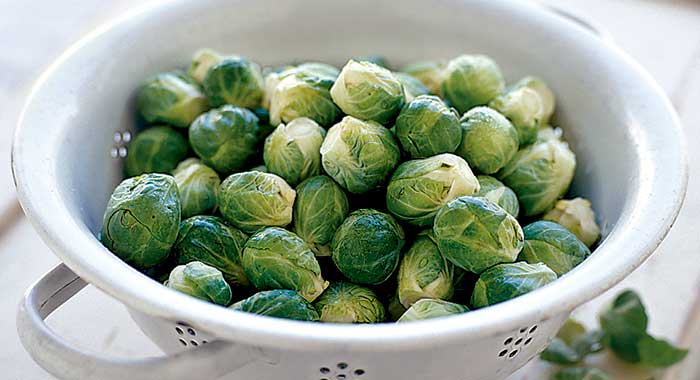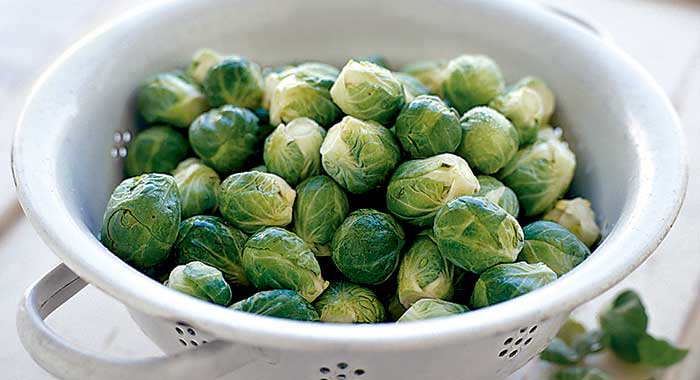
Pronounce it: bruss-ell spr-ow-t
The quintessential Christmas dinner veg, Brussels sprouts are throught to have been cultivated in Belgium in the 16th century – hence the name. Although they’re related to cabbage – they even look like a miniature, compact version – they have a sweet, nutty flavour, which some people can find bitter. They grow in multiple rows along a thick, central stalk.
Availability
Brussels sprouts are at their best over the winter months, coming in to season in October and lasting through until March.
Choose the best
Plump, bright green heads (the smaller, the sweeter) with tightly packed leaves. If you can buy them still attached to their long central stalk, so much the better – they’ll keep fresh for longer that way.
Prepare it
If the sprouts are still on the stalk, twist each one off, trim any loose, yellow or damaged leaves, wash, then trim the base. Some people cut a cross in the base to make sure they cook evenly but with smaller ones it’s not necessary, as it can cause them to go mushy. Larger ones can be cut in half.
To boil, put into a pan with some salt, cover with boiling water, bring back to the boil and cook, covered, for 5-10 minutes. They take 5-10 minutes to steam.
To stir fry, halve or slice finely and cook for about 10 minutes. Sprouts cook very quickly, and if overcooked are quite unpleasant, so test them regularly by piercing with a knife.
Store it
In a dark, cool place or the fridge for four days.
Cook it
Stir-fry in oil with onions and ginger; add cooked chestnuts at Christmas; boil until al dente (firm to the bite), then quickly pan-fry with diced pancetta and chopped garlic.
Alternatives
Try cabbage.

Be the first to comment on "Brussels sprouts"